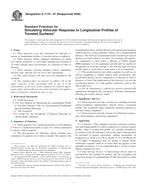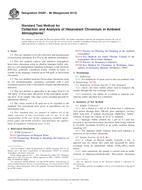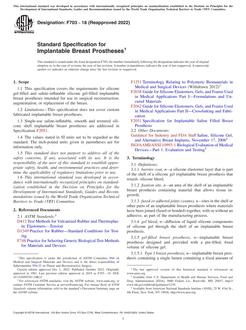1.1 These practices describe the partial extraction of soils, bottom sediments, suspended sediments, and waterborne materials to determine the extractable concentrations of certain trace elements.
1.1.1 Practice A is capable of extracting concentrations of aluminum, boron, barium, cadmium, calcium, chromium, cobalt, copper, iron, lead, magnesium, manganese, molybdenum, nickel, potassium, sodium, strontium, vanadium, and zinc from the preceding materials. Other metals may be determined using this practice. This extraction is the more vigorous and more complicated of the two.
1.1.2 Practice B is capable of extracting concentrations of aluminum, cadmium, chromium, cobalt, copper, iron, lead, manganese, nickel, and zinc from the preceding materials. Other metals may be determined using this practice. This extraction is less vigorous and less complicated than Practice A.
1.2 These practices describe three means of preparing samples prior to digestion:
1.2.1 Freeze-drying.
1.2.2 Air-drying at room temperature.
1.2.3 Accelerated air-drying, for example, 95°C.
1.3 The detection limit and linear concentration range of each procedure for each element is dependent on the atomic absorption spectrophotometric or other technique employed and may be found in the manual accompanying the instrument used. Also see various ASTM test methods for determining specific metals using atomic absorption spectrophotometric techniques.
1.3.1 The sensitivity of the practice can be adjusted by varying the sample size (14.2) or the dilution of the sample (14.6), or both.
1.4 Extractable trace element analysis provides more information than total metal analysis for the detection of pollutants, since absorption, complexation, and precipitation are the methods by which metals from polluted waters are retained in sediments.
1.5 The values stated in SI units are to be regarded as standard. No other units of measurement are included in this standard.
1.6 This standard does not purport to address all of the safety concerns, if any, associated with its use. It is the responsibility of the user of this standard to establish appropriate safety and health practices and determine the applicability of regulatory limitations prior to use.
Product Details
- Published:
- 05/01/2009
- Number of Pages:
- 4
- File Size:
- 1 file , 81 KB
- Redline File Size:
- 2 files , 160 KB


